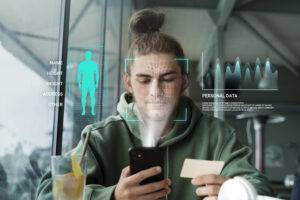IntroductionCardiovascular diseases (CVD), notably acute myocardial infarction (AMI), persist as a leading cause of global mortality despite advances in clinical management. Coordinated cardiac rehabilitation (CR) programs, such as the Coordinated Patient Care Program after Myocardial Infarction (MC-AMI), have demonstrated substantial reductions in mortality rates. However, optimizing outpatient care within these programs remains a challenge due to increasing patient volumes and physician workloads. This issue could be alleviated by using technology. Leveraging telemedicine solutions, particularly mobile apps, presents a promising avenue for addressing these challenges.AimThe main objectives of this study were to determine if the dedicated mobile app for the cardiac rehabilitation program optimizes outpatient visit workflow and improves patient adherence to the CR program.Patients and methodsThis observational study enrolled 103 patients after AMI, who completed the CR program and were eligible for the outpatient follow-up. Patients were divided into two groups: (1) the active group (n = 60) treated with a standard of care supplemented with the AHP-KOS app, and (2) the reference group (n = 43) treated with standard care without the AHP-KOS app. The first outpatient CR visit occurred 6 weeks after AMI.ResultsImplementation of the AHP-KOS app was associated with higher adherence to the CR program (91.7% of patients using the mobile app completed 6-week outpatient visits vs. 67.4% of individuals treated with standards of care, p < 0.001). Additionally, the duration of onsite visits was significantly reduced in the active vs. reference group (8 ± 3 min. vs. 11 ± 4 min, p < 0.001, respectively).ConclusionsThe AHP-KOS mobile app implemented in post-AMI resulted in higher adherence to the CR program (MC-AMI). Furthermore, the application of the AHP-KOS app resulted in financial and workflow optimization allowing for a significantly shorter time of outpatient visits.
The INTERconNEcT-EDs app-based self-help program for people with eating disorders: a usability and qualitative study
IntroductionMobile applications for eating disorders (EDs) offer flexible, cost-effective delivery of evidence-based interventions. Nevertheless, challenges persist in terms of user engagement and compliance. The INTERconNEcT-EDs



